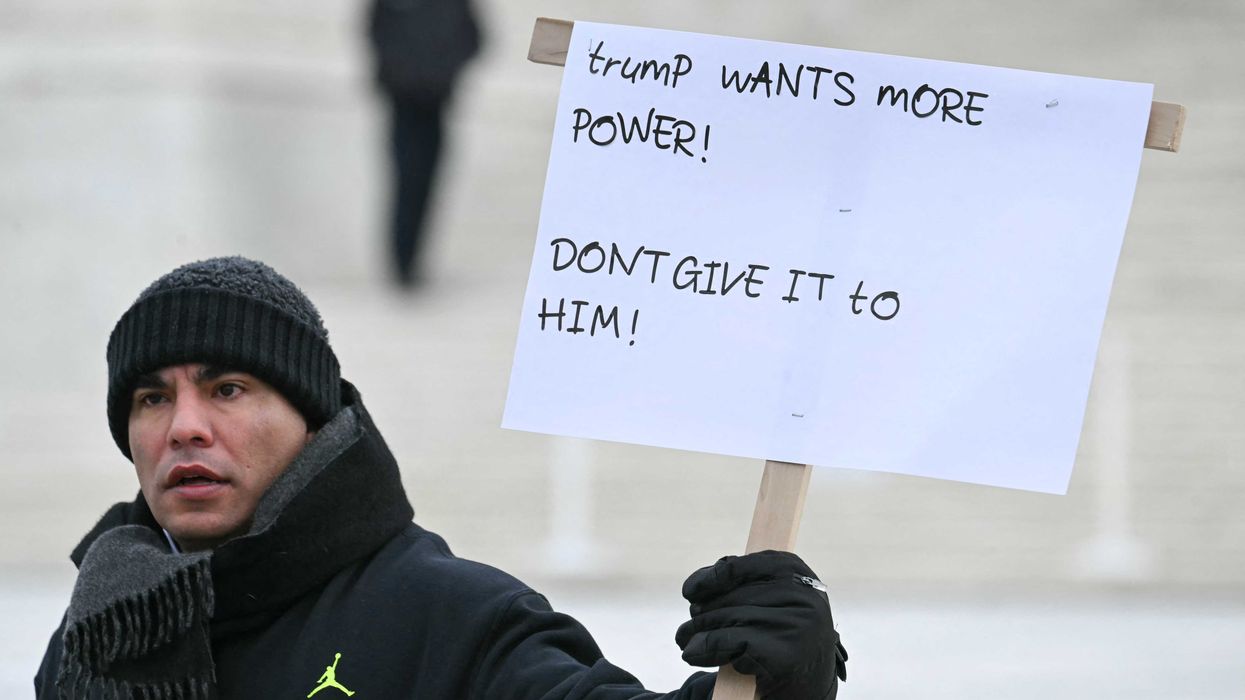Today marks the one-year anniversary of GBTV (now TheBlaze TV). When we launched, our stated goal was to deliver TV over the Internet, not Internet TV. And while streaming video over the Internet was not a revolutionary concept, nobody had ever tried to launch a brand new, online-only, HD-quality TV network before. But that’s Glenn—innovation and risk-taking are part of his DNA. Where others see impossibility, he sees opportunity. (That is one reason why the first-ever show to run on the new network was live from Israel! Glenn never thinks small.)
Twelve months later I am happy to report that we’ve succeeded beyond our wildest expectations. Despite the technical hurdles that are unique to watching our network, over 300,000 people have chosen to subscribe, giving TheBlaze TV a paid audience that’s larger than most free cable channels!
Unsurprisingly, this success has caused some of the major TV distributors to stand up and take notice. In fact, many of the top names in cable and satellite TV have inquired about adding TheBlaze TV to their channel lineups. As a result, we are excited to announce the next chapter in our expansion: TheBlaze TV will be carried on cable and satellite providers nationwide, beginning today with DISH Network. This expansion is in addition to our continued availability as a direct-to-consumer online subscription.
The last year has taught us a lot about running a network and delivering great content to consumers. I wanted to take a moment to share with you some of what we’ve learned and how that has impacted our decision to begin partnering with cable and satellite companies.
Prior to our initial launch I was often asked why we didn’t pursue a traditional cable channel. There were several factors, but the biggest was that we wouldn’t have been able to build the channel we wanted back then without giving up control. To get on the air we would have had to partner with a large media company that could provide us with the staff, infrastructure, and distribution necessary to launch a new network. That was something that we simply were not willing to do. The whole point of starting our own network was to be free from outside influences—giving that independence up right away in exchange for distribution was a non-starter. And so we found another way.
But now, a year later, everything has changed. Our subscribers’ enthusiasm and support has allowed us to make the necessary investments in programming and infrastructure, and we’re now in a position to launch a cable and satellite channel without losing control. We have the best staff, the best talent, world-class facilities and great distribution partners lined up, and we’ve done it all while ensuring that we answer to no one except our own audience.
As we take this next step we are working tirelessly to ensure that we bring all of the advantages we have as a direct-to-consumer streaming network to cable/satellite TV. Here are some thoughts on what we’ve learned, and what we’re going to take with us.
- Direct Audience Connection. Media fragmentation has been accelerating for as long as “media” has existed, but the pace of new options now entering the marketplace is staggering. A year ago I’d never heard of BuzzFeed, and now I can’t stop hearing about it. It doesn’t matter if your distribution medium is “narrowcast” or “broadcast,” having a direct connection with your fans is crucial to engagement. For example, even though I pay for HBO GO through Time Warner Cable, the weekly promotional email comes to me directly from HBO. No matter how viewers decide to consume the TheBlaze TV, we will continue to have a direct connection with them.
- Advertiser Support. There is over $100 million spent each year on national talk radio programs by advertisers who don’t care about politics on one side or the other, but simply want to reach consumers effectively. Advertising in political content doesn’t make you political, it makes you smart. Our existing clients have achieved great returns on their investments by reaching a large and loyal audience. In fact, we are proud to say that every advertiser that was with us at launch is still with us today. We intend to expand on the early success we’ve had at bringing these talk radio advertisers to TV. (Those same advertisers who spend $100m/year on national talk radio spend, on average, at least 5x more than that on cable TV advertising.)
- Audience Demand. We expected to be successful, but we never imagined the scale of our success. There are more people paying a dedicated monthly fee to watch our programming online than there are people watching many existing cable channels that they receive for free as part of their cable package. With that being said, no matter how successful we are as a subscription-only service, we can be even more successful if we add cable and satellite distribution to the mix.
- Viewing Habits. While there is a huge proliferation of “Smart” devices in homes, including Roku, Boxee, AppleTV, game consoles, and Smart TVs themselves, consumers would often rather just “watch TV.” They don’t want to switch inputs or choose from a vast menu of options, they just want to “see what’s on.” To a lot of tech people, that is counterintuitive. Why wouldn’t people want to choose exactly what they want to watch? But those who work in media have known this for a long time. In fact, the reason that the most valuable spot on TV is the spot AFTER American Idol is because people like to “see what’s on.” We’ve witnessed this phenomenon ourselves. Even though we’ve been offering all of our content both live and on-demand since launch—people can choose to watch any show at any time—over 50 percent of it is still consumed live. In addition, despite our presence on many connected devices, the majority of people watch our network on a PC or Mac, a device that, oftentimes, is not located in an ideal spot in the home. Many people don’t want to watch TV on their computer, they want to watch TV on their TV—and we’d like to make that as simple for them as possible.
- Transaction Friction. While I believe that we were right about the DELIVERY of content moving to the Internet, I think that PAYMENT for content is going to remain between cable/satellite companies and consumers for the foreseeable future. For all the complaining that consumers do about ever-increasing prices, it’s really an amazing amount of news, information, and entertainment that is delivered for one monthly fee. I don’t think that consumers want to have to subscribe separately to TheBlaze, CNN and HBO from three different places with three different interfaces and get three different monthly charges on their credit card. Cable and satellite companies have created an excellent billing and payment infrastructure with over 100,000,000 customers—it’s smart for us to take advantage of that.
- Content Delivery over the Internet. No matter how content is currently delivered, that delivery will eventually be over the Internet.
- Rise of TV Everywhere. When we began planning for TheBlaze TV it seemed that cable and satellite companies were doing more to restrict content than they were doing to make it available across platforms to their customers. The roll-out of TV everywhere has changed the paradigm. Most of the top cable and satellite companies now have robust iPad apps and online viewing experiences, with more coming each day. This trend makes us feel much more comfortable about our long-term ability to provide great content wherever and however our fans want it.
These are just some of the reasons that we’ve decided to begin partnering with cable and satellite companies to bring our content directly to televisions. There will be some exciting changes as a result, but here’s what won’t change:
- The Best Content. In 1996 Bill Gates wrote a famous article titled “Content is King.” 16 years later it’s obvious that he was right. Cable and satellite providers have come to us because we have great content (currently over 35 hours a week of live, exclusive, original programming) and a large, passionate, engaged audience. These companies are smart enough to know that it’s their job to have the best collection of content so that their customers won’t leave.
- Commitment to the Internet. Direct subscriptions continue to be a key part of our long-term strategy and we will continue to deliver our content over the Internet. TheBlaze.com gets over 9 million unique visitors per month, making it one of the most heavily trafficked web sites associated with a TV network in America. We believe that this is a huge complementary asset to our TV programming and we will continue to be digital innovators.
- Independence. We’re one of a very small number of content providers without corporate ownership. Even though our content may be distributed by the major cable and satellite providers, we remain a fully independent company, not subject to the demands of Wall Street, media conglomerates, or pressure groups. We answer only to those who consume our content.
Thank you for your continued support of Glenn Beck and TheBlaze. It’s been an unbelievably exciting year and we are looking forward to this next chapter. With your continued enthusiasm and support we know it will be another huge success.
Sincerely,
Christopher Balfe
CEO, TheBlaze

 JIM WATSON / Contributor | Getty Images
JIM WATSON / Contributor | Getty Images
 Joe Raedle / Staff | Getty Images
Joe Raedle / Staff | Getty Images AASHISH KIPHAYET / Contributor | Getty Images
AASHISH KIPHAYET / Contributor | Getty Images Harold M. Lambert / Contributor | Getty Images
Harold M. Lambert / Contributor | Getty Images